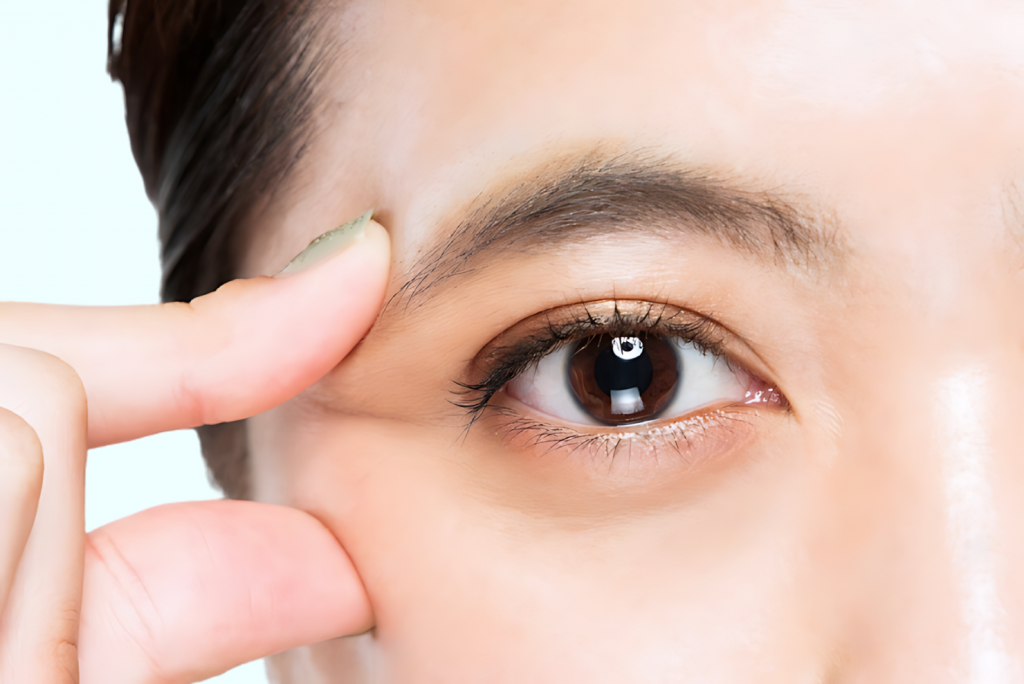ASIAN BLEPHAROPLASTY (DOUBLE EYELID SURGERY)

Double eyelid surgery, also known as Asian blepharoplasty or double eyelid blepharoplasty, is a cosmetic surgical procedure that creates a crease in the upper eyelid, resulting in what’s commonly referred to as a “double eyelid.” This procedure is popular among East Asians who naturally have a “monolid” or a single eyelid without a crease.
PURPOSE OF DOUBLE EYELID SURGERY
COSMETIC ENHANCEMENT
Many individuals desire a double eyelid for aesthetic reasons, as it can make the eyes appear larger or more alert.
FUNCTIONAL IMPROVEMENT
In some cases, the skin of the upper eyelid may droop over the lashes, obstructing vision. Creating a crease can help alleviate this.
PROCEDURE STEPS
CONSULTATION
During a thorough consultation, Dr Sandeep will discuss your desired aesthetic outcome and determine the best technique suitable for your particular needs.
ANAESTHESIA
The procedure can be performed under local anaesthesia, with sedation or general anaesthesia.
TECHNIQUES
INCISIONAL METHOD
An incision is made along the desired crease line, and a small amount of skin, muscle, and fat may be removed. The skin is then sutured to create a permanent crease. This method is suitable for those with thicker eyelids or excess skin.
SUTURE METHOD (OR NON-INCISIONAL METHOD)
Small punctures are made along the desired lid crease, and sutures are used to create a crease. This method is less invasive and has a quicker recovery time but may not be as long-lasting as the incisional method.
CLOSURE
The incisions or puncture sites are closed with sutures.
RECOVERY
IMMEDIATELY AFTER THE PROCEDURE
Swelling and bruising are expected. Cold compresses can help reduce swelling.
FIRST FEW DAYS
Patients are advised to keep their head elevated and avoid activities that strain the eyes, such as reading or screen time.
STITCHES
Typically, these are removed after 5-7 days for the incisional method.
ACTIVITY
Most patients can return to work and daily activities within a week, but strenuous activities should be avoided for at least 2-3 weeks.
FINAL RESULTS
Swelling may take several weeks to months to fully subside, revealing the final results.
POTENTIAL RISKS AND COMPLICATIONS
- Infection: Although rare, infections can occur after any surgical procedure. Oral or intravenous antibiotics are typically prescribed. In rare cases, surgical drainage might be necessary.
- Hematoma: Accumulation of blood in the surgical area. Small hematomas might resolve on their own, but larger ones may require drainage.
- Lagophthalmos: Inability to close the eyelids completely. This can be temporary due to swelling or, in rare cases, permanent. Lubricating drops or ointments can help, but severe cases might need surgical intervention.
- Scarring: While the incisions are made in the natural creases to hide scars, some people might develop more noticeable or hypertrophic scars. Treatments like silicone gel, steroid injections, surgical scar revision or laser therapy can help improve the appearance of scars.
- Dry or Irritated Eyes: Some patients may experience dryness, burning, or itching after the procedure. Lubricating eye drops or ointments are typically prescribed. In some cases, punctal plugs or other interventions might be necessary.
- Vision Changes or Blindness: Extremely rare but serious complications include temporary or permanent vision changes or even blindness, typically due to bleeding or excessive pressure on the eye’s blood vessels. Immediate medical attention is crucial. This might involve reducing pressure in the eye or emergency surgery.
- Double vision: Rarely injury to the muscles which move the eye may result in double vision.
- Unfavourable Cosmetic Outcome: You might be dissatisfied with the appearance after the surgery, such as overcorrection or under correction. There might be differences in the appearance of the two eyelids. Minor asymmetries might improve with time as swelling subsides. Significant asymmetries might require revision surgery.
- Loss of the Crease: Especially with the suture method, the crease might not be permanent.
- Numbness or Changes in Sensation: Temporary numbness or altered sensation in the eyelid area can occur. This usually resolves on its own over time as nerves regenerate.
- Adverse Reaction to Anesthesia: As with any procedure involving anaesthesia, there’s a risk of complications such as allergic reactions or breathing difficulties. An anaesthesiologist monitors patients during surgery to address any issues immediately.
- Infection: As with any surgical procedure, there’s a risk of infection.
CONCLUSION
Double eyelid surgery can offer significant cosmetic enhancement for those who desire a crease in their upper eyelids. As with any surgical procedure, it’s essential to have realistic expectations and choose a qualified and experienced surgeon like Dr Sandeep. Proper preoperative evaluation and postoperative care are crucial for optimal outcomes.
ACCENTUATE YOUR EYES WITH DOUBLE EYELID SURGERY: SCHEDULE YOUR CONSULTATION NOW!
Transform your eyes with Dr Sandeep’s Double Eyelid Surgery, designed for those who wish to enhance their eyelid structure by creating or defining a crease. This procedure is perfect for achieving a brighter, more structured eye appearance, which can be especially desirable for individuals who lack a natural eyelid crease.
Experience how Double Eyelid Surgery can offer more than just an aesthetic upgrade—it can also contribute to a vibrant and youthful look that complements your entire face.
Book your consultation with Dr Sandeep today and take the first step toward an eye-opening change.


